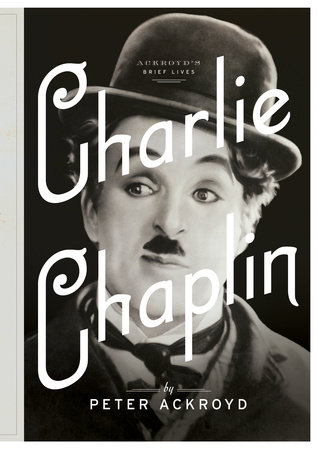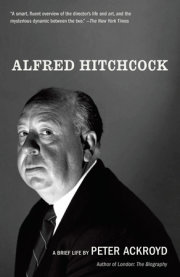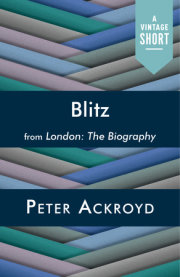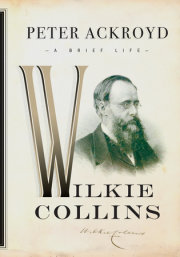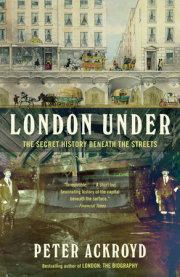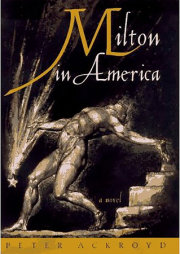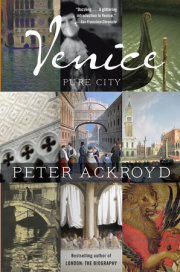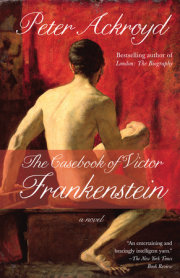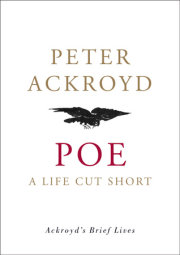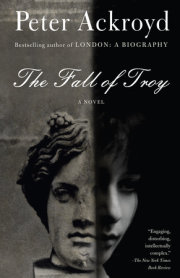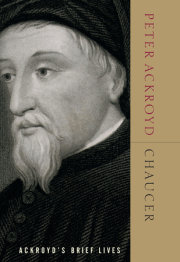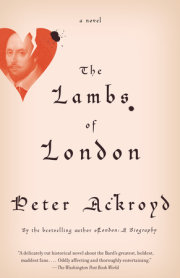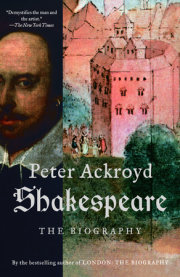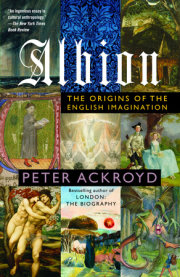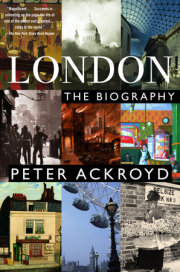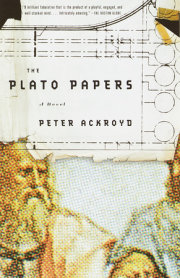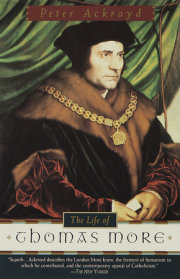1
A London Childhood
Welcome to the world of South London in the last decade of the nineteenth century. It was frowsy; it was shabby; the shops were small and generally dirty. It had none of the power or the energy of the more important part of the city on the other side of the Thames. It moved at a slower pace. All the accounts of it, in the late nineteenth and early twentieth centuries, describe it as a distinct and alien place. It was in a sense cut off from the life of the greater London; this may account for the air of exhaustion, and of torpor, which could hit the unwary. It was the site of small and noisome trades such as hat-making and leather-tanning. Factories abounded for the manufacture of biscuits, jam and pickles. Glue factories stood adjacent to timber warehouses and slaughterhouses. The predominant smells were those of vinegar, and of dog dung, and of smoke, and of beer, compounded of course by the stink of poverty. By the end of the nineteenth century Kennington, the earliest home of Charles Chaplin, had all the characteristics of a slum.
The areas south of the river had for centuries also been the place of somewhat suspect pleasures, such as brothels and pleasure gardens. That tradition was continued in the nineteenth century with the public houses, gin palaces and music halls of the area. One of the first music halls, the Winchester, opened in South London in 1840. The Surrey followed eight years later. Two of the great halls, the Canterbury and Gattis-in-the-Road, were in the vicinity along the Westminster Bridge Road; smaller halls were to be found everywhere. The stars of the music hall would congregate on Sunday mornings at the White Horse, the Queen’s Head, the Horns or the Tankard, public houses which the young Chaplin knew well. The music-hall booking agents were located in Lambeth.
Since South London was separated from the rest of the capital, it acquired its own communal atmosphere; the houses and tenements were bursting with people, so the women and children spent much of their time on the streets close to their dwellings. They sat outside on chairs, or leaned from the windowsills. As a result the neighbourhood itself, rather than the individual household, was the true family; wives looked out for each other, and the children played together. One of those children was Charles Chaplin. “They are my people, these cockneys,” he wrote in a magazine article in 1933. “I am one of them.” South London would remain the source and centre of his inspiration.
The origins of Charles Chaplin are mysterious. No certificate of his birth has ever been found, and no entry in a baptismal register exists. He once travelled to Somerset House in search of his birth certificate, but there was nothing there. He sought himself here, he sought himself there, but he could not find himself anywhere. He might have come out of nowhere. The place of his birth is equally mysterious. He believed that he had been born in “East Lane,” off the Walworth Road; the narrow thoroughfare is called East Street, but it was locally known as a “Lane” because it boasted a loud and vigorous Sunday morning street market with its costermongers, old-clothes sellers and various hawkers or traders. (“Lane” was the nomenclature generally given to a street market.) He may or may not have first seen the world there. Another difficulty arises. He confided on occasions to his friends that he was not sure of the identity of his biological father; nevertheless he took the name of a successful music-hall artist, Charles Chaplin, who was for a while married to his mother. He once said to an assistant, Eddie Sutherland, that “I don’t know, actually, who my father was.” He may have been, in the phrase of the period, a love child.
There is less difficulty about the identity of his mother. Hannah Chaplin gave birth to a boy in the middle of April 1889, at eight o’clock in the evening. An announcement was placed in a music-hall paper, The Magnet, in the following month. “On the 15th, the wife of Mr Charles Chaplin (nee Miss Lily Harley) of a beautiful boy. Mother and son both doing well. Papers please copy.” The Magnet was out by a day: Chaplin was born on April 16.
Hannah came from a somewhat rackety family, the Hills, many of whose members lived in the immediate vicinity of East Street; toil and poverty had left their mark on some of them, compounded by a streak of madness in the female line. Lily Harley was her stage name. She went on the boards as a singer at the beginning of 1884, and her musical career earned some success before entering a decline.
There is no doubt that she met Mr. Chaplin when he found lodgings with the Hill family in Brandon Street, Walworth; she was nineteen years old, and already pregnant, but the baby was not Chaplin’s. The child, Sydney, was said by Hannah herself to be the result of an elopement to South Africa with a rich bookmaker named Sydney Hawkes. Whatever the truth of the matter Charles Chaplin married her in June 1885, and gave the infant his surname. He also gave Hannah’s second son his surname. This child bore his first name, too, but he walked out on Hannah a year after the birth. It must be suspected that the fault was her infidelity. He may have guessed, or suspected, that the infant son was not his. Chaplin later confessed that his mother had enjoyed many affairs; it is also more likely than not that, in moments of distress and poverty, she took to the streets. In My Autobiography Chaplin states that “to gauge the morals of our family by commonplace standards would be as erroneous as putting a thermometer in boiling water.” In his subsequent films he is preoccupied by the role of the prostitute.
It is a complex and bewildering saga, but perhaps not an unusual one in working-class South London, where husband and wife were often parted and where women drifted in and out of prostitution to save their families. Drink played its part, too, in the dissolution of family ties. Alcohol was, in a sense, the ruin of the Chaplins.
Charles Chaplin senior’s first recorded performance took place in 1887. His image, complete with topper and dress coat, is to be found on the cover of a music sheet for a song entitled “Pals Time Cannot Alter”; he also achieved success with songs such as “Eh, Boys?,” “As the Church Bells Chime” and “Oui! Tray Bong!” He had a pleasant baritone voice and an easy stage presence; he played the “swell,” the man about town, whose debonair attitude is matched by his elegant dress of top hat, cravat and morning suit. Champagne, however, may have been his drink of choice off as well as on the stage; in the manner of so many music-hall artistes, he descended into alcoholism.
It was often surmised that Chaplin possessed Jewish blood; he denied it, saying that “I have not that good fortune.” Yet on other occasions he hinted, or meditated upon, a possible Jewish identity. Since he did not know who his father was, there was some room for speculation. Yet it seems certain that he had Romany ancestors; he claimed that his maternal grandmother was “half-gypsy.” In a letter, found after his death, he was informed that he had been born in a gypsy caravan at Smethwick, near Birmingham; since the informant was named Jack Hill, there may be some truth to the story.
Chaplin’s adult friends accepted his mother as a gypsy; it is reported that he himself was familiar with the English variant of Romany, and in particular was fluent in the patois among gypsies and street entertainers of London. Chaplin’s eldest son Charles Junior wrote, in his memoirs, that “my father has always been inordinately proud of that wild Romany blood.” Towards the end of his life Sydney Chaplin, Charles Junior’s older half-brother, married a Romany woman known as “Gypsy.”
Hannah and her two small sons did not remain long in East Street. Sydney’s school records indicate that they moved from address to address in the same neighbourhood; this pattern would continue throughout Chaplin’s childhood. Hannah had embarked on yet another affair when Chaplin was two or three years old; she bestowed her affections on a successful variety star, Leo Dryden, who composed music-hall songs on the theme of queen and country. One of his most successful ballads is the still remembered “The Miner’s Dream of Home.” His prosperity may have marked the moment when mother and children moved from the rowdy and populous neighbourhood of East Street to the relative quiet and salubriety of West Square. It was only half a mile away, but it was a move to another country.
The newly established family now had a housemaid, and Chaplin remembered the Sunday excursions they made down the Kennington Road. He wore a blue velvet suit, and blue gloves to match it. He recalled the elegance of the Westminster Bridge Road, with its fruit shops, restaurants and music halls; he remembered sitting on top of a horse-drawn bus and putting up his little hands to touch the flowers of the lilac trees. He never forgot those moments of pure delight. He also recalled the odour of freshly watered roses, sold by the flower-girls on the corner of Westminster Bridge. In his subsequent films, flowers are often a token of fragile or doomed love.
These are descriptions quite different from the more sordid realities of his South London childhood. Nevertheless they can be considered true memories of the past and, as such, the first stirrings of his imagination. It is clear enough that there was a short period, perhaps of two or three years, in which he and his family were not in poverty; this is perhaps significant since the “little fellow,” as Chaplin often referred to his character on screen, the tramp by the name of Charlie, gives the impression of having come down in the world from a presumed state of greater affluence.
In this happy period Hannah Chaplin had a child by her lover, Leo Dryden; Wheeler Dryden was born at the end of August 1892, and had no discernible place in his half-brother’s childhood. Hannah’s relationship with Dryden in any case came to an end in the spring of 1893 when he left her, removing his son with him. She was not considered by him to be a fit mother. This was the time when all her troubles started. Her mother, Mary Ann Hill, had been committed to an asylum a few weeks before. The doctors recorded that Mrs. Hill “is incoherent. She says that she sees beetles, rats, mice and other things about the place.”
Hannah, with two sons in her care, was therefore forced to shift for herself as her family could offer her no support. It is not certain how she lived. She may have found another lover or a succession of casual lovers. Chaplin later related a story in My Autobiography that she had, at some point in 1894, found a singing engagement at the Canteen in Aldershot. This was a military venue, with a correspondingly rough and vocal audience. Hannah’s voice failed during her performance and she was booed off the stage, whereupon the theatrical manager put on the young Chaplin in her place. He sang a popular song of the period, “ ’E Dunno Where ’E Are.” The public threw coins at the stage whereupon he decided to pick up the money before resuming his performance. This provoked more laughter and the young boy continued a routine of song and impersonation; at one point he imitated the cracked voice that had curtailed Hannah’s act. Eventually to much applause she appeared once again before the audience, and carried off her child. Chaplin said that she never regained her voice, although she did in fact manage one last engagement at the Hatcham Liberal Club where she was billed as “Miss Lily Chaplin, Serio and Dancer.”
It is an interesting story and may indeed be true, although the exhaustive music-hall listings of the trade paper, The Era, have no record of the event at the Canteen. In another version of the story he claimed that his “father” had propelled him on to the stage; in this version, too, his mother was drunk rather than incapacitated by laryngitis. It would be too pedantic to state that he lied about his childhood; let us say that he was inspired to tell different stories about his past as the mood or the moment took him. In the official version he is his mother’s protector and saviour, which is also the role the Little Tramp would assume towards young women in Chaplin’s later films.
Hannah Chaplin must have still visited the booking agents, and for a while she obtained work as a dancer with the Katti Lanner ballet at the Empire in Leicester Square. Another dancer at the Empire recalled how the young Chaplin “would stop there in the wings, singing my choruses half a line ahead of me . . . The harder I frowned at him, the wider he grinned.” She added that “he had a wonderful ear for music even then, and picked up almost everything I sang.” A schoolmistress from the Victory Place Board School in Walworth, which he briefly attended, remembered “his large eyes, his mass of dark, curly hair, and his beautiful hands . . . very sweet and shy.”
Hannah Chaplin’s career, however, was effectively over. She found occasional employment as a mender of old clothes, and then as a seamstress, but it was laborious and underpaid work. In this period she turned to the church for comfort in her distress. In 1895 she became a member of the congregation of Christ Church, on Westminster Bridge Road, where in the record of her enrolment she is described as “an actress who lives apart from her husband.” She also added to her precarious income by making dresses for some of the congregation, but her health began to suffer from the strain.
She was admitted to Lambeth Infirmary on 29 June 1895, where she remained for a month; she was suffering from severe stress that seems to have taken the form of migraine headaches. Sydney Chaplin was sent to the local workhouse from which after a few days he was transferred to a school for indigent children in West Norwood. Chaplin was taken in by a relative of his grandmother, John George Hodges, who lived in the neighbourhood.
The Chaplin boys were reunited with their mother in the early spring of 1896, but their address is not certain. They moved from cheap rented room to rented room, and in the space of three months they found themselves in six different garrets or basements. Chaplin’s memories of this London period are generally unhappy. Sydney had outgrown his only coat, and so Hannah made him one out of an old velvet jacket she owned; Sydney was also forced to wear a pair of his mother’s high-heeled shoes cut down to size. The boys pilfered goods from street stalls. The family relied upon parish charity, with relief parcels and visits to the soup kitchens of the mission houses. Chaplin never tasted butter or cream as a child and, as a prosperous adult, he could never get enough of them. The sculptor who in 1981 fashioned his statue in Leicester Square, John Doubleday, has stated that, according to Chaplin’s exact measurements, the adult still possessed “the undeveloped thorax of an underfed child.”
There were happier moments. The young Chaplin earned a few pennies by dancing outside the doors of public houses to the melody of a passing accordion. One day Sydney found a purse of gold coins on a bus while selling newspapers. It may be, however, that he had stolen it. On the proceeds the Chaplins went down to Southend for their first sight of the sea. They swam, when they could afford it, at the Kennington Baths. They attended magic-lantern shows at the Baxter Hall, where admission cost a penny. Hannah, in moments of health and vitality, also managed to entertain them by imitating the expressions and movements of the people in the street below. Her youngest son may have inherited her pantomimic skills.
In an essay for
Photoplay magazine in 1915 Chaplin wrote that "it seems to me that my mother was the most splendid woman I ever knew. I can remember how charming and well mannered she was. She spoke four languages fluently and had a good education . . . I have never met a more thoroughly refined woman than my mother." Yet he may have overestimated her skills and virtues. A neighbour recalled that "he thought no one who ever lived was like his mother. The lad thought she was the cleverest player in the world, a great lady and his ideal." Her nickname for her second son was "the King." Such love, perhaps, is doomed to be disappointed.
Separation from her was soon to follow. In the spring of 1896 Hannah’s sewing machine was repossessed for lack of payment, and there was now no way of continuing her old trade. She succumbed once more to sickness and was taken to the infirmary. There was now no recourse for the Chaplin children but the local workhouse, the place that poor families most feared. "You’ll end up in the work’us!" was a familiar expression. So in May they were despatched to Southwark Workhouse, according to its register, "owing to the absence of their father and the destitution and illness of their mother." Their bewilderment may be imagined. Nevertheless in the same article for Photoplay Chaplin declared that "English people have a great horror of the poorhouse; but I don’t remember it as a very dreadful place." His strongest memory was "of creeping off by myself at the poorhouse and pretending I was a very rich and grand person . . . I was of a dreamy, imaginative disposition. I was always pretending I was somebody else . . ."
They remained in this institution for approximately three weeks while the Lambeth Board of Guardians pursued the supposed father, Charles Chaplin senior. He was eventually found and brought before the board; he agreed to take in Charles but not Sydney, on the grounds that the older child was clearly illegitimate. But the board believed it best that the boys should stay together, and Chaplin agreed to pay the sum of fifteen shillings a week to maintain them at Hanwell Schools, an institution twelve miles out of London. He never kept his promise of regular payment.
In the middle of June the two boys were taken in a horse-drawn baker’s wagon to Hanwell Schools for Orphans and Destitute Children. Here they were separated, Sydney at the age of eleven being taken to the upper division of the boys’ school while Charles at the age of seven was placed in the infant division. He later told a reporter that "my childhood ended at the age of seven." Hanwell was a thoroughly Victorian institution, based upon a regimen of formal instruction, carefully arranged days and strong discipline. In that respect it did not differ very much from the great public schools of the period. The young inmates marched from class to class, and from dormitory to dining hall. Chaplin’s number was 151. In material respects, however, the children were much better cared for than their contemporaries consigned to the streets or slum dwellings. They were given warm clothes, good shoes, and a nourishing if plain diet.
But for the young Chaplin it was a place of suffering and humiliation. In later life he referred to it as "my incarceration." He was separated from his mother and, after Sydney was sent to a naval training ship, from his brother. He had no one else in the world. He was small, and helpless, and hopeless. He contracted ringworm, and fell into what he called "paroxysms of weeping" when his head was shaved. He was detected in some piece of misbehaviour, the details of which are unclear. He may have peeked at a girl through her keyhole; he may have started a fire in the boys’ lavatory. The stories differ. Whatever the crime, the punishment was determined in advance: he received a slash or two with a birch cane. A little while afterwards he was prescribed a laxative and consequently soiled his bed. He was punished two days later by being denied the orange and boiled sweets handed out on Christmas Day. Yet despite his distress this was the only period of his life when he received any continuous education. He learned to write his own name and to read a little.
Hannah did not visit him for almost a year, and it seems that he felt a profound sense of betrayal. When she eventually came to him in the summer of 1897, the young Chaplin was horrified and humiliated. He told a good friend, Harry Crocker, that "she caused me anguished embarrassment." She may already have borne the marks of insanity that afflicted her family and had brought down her mother. He told Crocker that for some reason she was carrying an oilcan. "Why do you come with that, Mother?" he asked her. "Why do you come at all? They’ll all see you. They’ll all see you!" In My Autobiography he tells a different story of a fresh and fragrant woman coming to visit her lonely child. The reader must judge.
In later life he conceived a scene in which an old lady trudges up a staircase carrying a bucket of water; on the fourth or fifth landing a door suddenly opens, and a man punches her in the face. "Oh," he says in horror, "I thought you were my mother." "You have a mother?" "Yes," he replies, weeping, "I have a mother." Chaplin never really trusted women. He always feared loss and abandonment, slight and injury, indulging in paroxysms of jealousy on the smallest provocation. With his lovers he was suspicious and difficult and angry.
Yet he survived Hanwell by making himself invulnerable. "Even when I was in the orphanage," he told his eldest son, ". . . even then I thought of myself as the greatest actor in the world. I had to feel the exuberance that comes from utter confidence in yourself. Without it you go down to defeat." This invulnerability later became part of his screen persona. The Little Tramp, Charlie, is often detached and invincible. He always picks himself up and walks jauntily into the distance; in that respect, he shows indomitable energy and determination. He rarely becomes an object of pity.
So in the life of the small child we can see the seeds of the Little Tramp. In the earliest films he is often angry or cruel, wishing at all costs to take revenge on life and especially on those figures of authority who threaten him. He craves food and security. He desperately seeks love but never finds it. He has learned to cope with the vicissitudes of existence by affecting indifference. He is rootless, with no discernible home. Most of Chaplin’s later films, too, concern the art of survival in a hostile or unsympathetic world.
At the age of eight the young boy was discharged from Hanwell on 18 January 1898, and returned to his mother. Sydney came home from the training ship, Exmouth, two days later. The family were once more together. The nature of their life now is not known, although it could hardly have been a secure one. He may have been recollecting this period when he said to a companion, May Reeves, that "every four weeks we were evicted because we couldn’t pay the rent. Each time we had to pack up and carry our mattresses and chairs on our backs to a new house." He and Reeves were walking around Kennington on one of his nostalgic visits to his old neighbourhood. He showed her a dilapidated grocery store. "How happy I was to be able to run there and buy something for tuppence." Then he pointed to a shed. "I often spent the night in there when we were chased from our lodgings. But I preferred to sleep on park benches."
It was perhaps inevitable that on 22 July the Chaplin family arrived at Lambeth Workhouse. They had not managed to survive the outer world. The two boys were after a week transferred to the poor-school in West Norwood to which Sydney had once been consigned. A strange episode followed. On 12 August Hannah Chaplin managed to persuade the authorities that she was fit and able to look after her children. So they were released from the school into her care. Mother and children spent their day of freedom in Kennington Park, where they ate cherries on a bench and played catch-ball with a crumpled newspaper. It was a brief respite from the world that enclosed them. Hannah said brightly, at the end of the day, that they would just be in time for tea. She meant tea at the Lambeth Workhouse where they duly presented themselves, much to the annoyance of the officials who had to fill in once more all the appropriate forms. Three days later the boys were back in West Norwood. The world closed in again. Chaplin, in later life, said that parks always induced in him the sensation of sadness. He wrote, in a magazine article of 1931, "how depressing Kennington Park is."
At the beginning of September Hannah Chaplin was taken from the workhouse to Lambeth Infirmary, with her body badly bruised. The authorities here attested that she was suffering from syphilis, which in its third stage may attack the brain. The diagnosis was never repeated by later physicians, but it is perhaps significant that it could be made in her case. Nine days later she was moved again; she was consigned to Cane Hill asylum in Surrey, where a doctor recorded her behaviour. "Has been very strange in manner—at one time abusive & noisy, at another using endearing terms. Has been confined in PR [padded room] repeatedly on a/c of sudden violence—threw a mug at another patient. Shouting, singing, and talking incoherently. Complains of her head and depressed and crying this morning—dazed and unable to give any reliable information." She asked the doctors if she were dying. She told them that she was on a mission from the Lord. Then she stated that she wished to get out of the world.
Two nurses went to West Norwood to acquaint the boys with their mother’s condition. Sydney finished a soccer game and then burst into tears. Charles did not cry, but began to blame his mother for betraying him. In truth she had succumbed to hereditary madness which she was too ill and weary to withstand.
It was now determined that Charles Chaplin senior had to take responsibility for the two boys. So they were driven in a van from Lambeth Workhouse, where they had once more been assigned, to an unprepossessing house at 287 Kennington Road where Chaplin lived on the first floor with his mistress, Louise, who did not welcome the arrival of unwanted children. On the frequent occasions when she was drunk, she complained bitterly of the imposition laid upon her by the presence of the boys. She conceived a particular dislike for Sydney, who avoided her company by staying away from morning to midnight.
Chaplin senior himself was in the last stages of his career; his popularity had waned and, as the bookings grew less frequent, he consoled himself with drink. On the nights when he did perform, he could be charming and expansive; he had six raw eggs in a glass of port before leaving for the hall. But he often spent all day and all evening in some of the many public houses of the neighbourhood, trying to drown his anxiety and frustration. His youngest son watched him closely; he would one day make a speciality of "drunk routines."
Chaplin senior’s drunkenness gave rise to more bitterness in Louise, which she vented on the boys. Charles returned one Saturday morning after school to find the flat deserted and the larder empty. He waited, but nobody came. In desperation he walked into the street, and spent the afternoon visiting the various markets of the neighbourhood. He had no money, and no food. He wandered until nightfall, and then returned to Kennington Park Road; but the flat was in darkness. He walked the few yards to Kennington Cross where he sat on the kerb and waited. Two musicians, one with harmonium and the other with clarinet, were playing an old-fashioned tune outside the White Hart public house; it was called "The Honeysuckle and the Bee" and it so enchanted Chaplin that he crossed the road to get closer to the melody. He would remember the song all his life.
When he went back to the house, he saw Louise making her way down the garden path. She was staggering drunkenly, and he waited until she had closed the door. Then he slipped in with the landlady of the house who had suddenly returned. He went up to the darkened landing. Louise came out, and ordered him to leave. He did not belong there. On another occasion a policeman reported seeing Sydney and his young brother, at three in the morning, sleeping by a night watchman’s fire. This was the life which the young Chaplin was obliged to lead.
On 12 November, Hannah Chaplin knocked on the door. She had been discharged from Cane Hill, and had come to take them away. She took them round the corner to a small lodging in Methley Street, where she earned a bare income by sewing together blouses. The odours of Hayward’s pickle factory behind them competed with the stench of a slaughterhouse beside them. Yet South London people were inured to smells.
The Chaplins’ landlady at Methley Street recalled that "Charles was rather a frail child with his mop of dark hair, his pale face and bright blue eyes. He was what I call ‘a little limb’—out in the streets from morning to night. I remember he was a regular one for finding a man with a barrel organ, and dancing to the music. He got a lot of extra money for the organ grinder and a few coppers for himself. I suppose that’s how he started becoming an entertainer. Charlie was supposed to go to school in Kennington, but he was an awful truant."
His days at school were in fact coming to an end. His last recorded attendance there was on Friday 25 November 1898, after which date he was to be found upon the music-hall stage. He had become a professional dancer.
Copyright © 2014 by Peter Ackroyd. All rights reserved. No part of this excerpt may be reproduced or reprinted without permission in writing from the publisher.

